Rauschenberg & Albers: Box vs. Square
On this page you will find announcements, news, articles and reviews about Rauschenberg & Albers: Box vs. Square.
* * * * * * * * * * * * * * * * * * * * * * * * * * * * * * * *
FSW Fine Arts Professor Steve Chase to provide brief history of Black Mountain College (04-20-16)
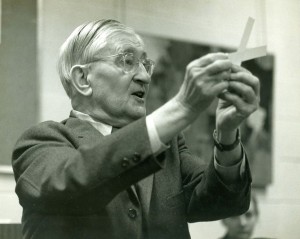 The Bob Rauschenberg Gallery at Florida SouthWestern State College will present a lecture by FSW Fine Arts Professor Steve Chase on Tuesday, April 26 titled “Rauschenberg, Albers and Others: A Brief History of Black Mountain College.” The lecture is being offered in conjunction with RAUSCHENBERG & ALBERS: Box Vs. Square), an exhibition of work on view now through May 14, in the Bob Rauschenberg
The Bob Rauschenberg Gallery at Florida SouthWestern State College will present a lecture by FSW Fine Arts Professor Steve Chase on Tuesday, April 26 titled “Rauschenberg, Albers and Others: A Brief History of Black Mountain College.” The lecture is being offered in conjunction with RAUSCHENBERG & ALBERS: Box Vs. Square), an exhibition of work on view now through May 14, in the Bob Rauschenberg 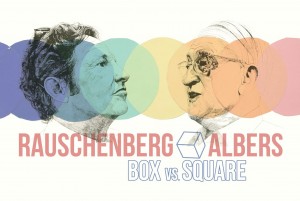 Gallery. The lecture starts at 6:30 p.m. in the Bob Rauschenberg Gallery and follows the 2016 FSW Juried Student Art Show opening reception and awards ceremony at 4:00-6:00 p.m. in the Rush Library (J-Building) Ground Floor Lobby.
Gallery. The lecture starts at 6:30 p.m. in the Bob Rauschenberg Gallery and follows the 2016 FSW Juried Student Art Show opening reception and awards ceremony at 4:00-6:00 p.m. in the Rush Library (J-Building) Ground Floor Lobby.
Professor Chase holds degrees in both Fine Art Photography and Motion Pictures with a Bachelor 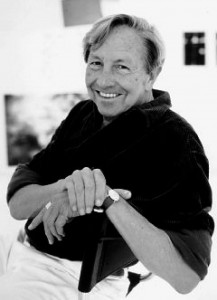 of Science in Communications from the University of Miami, Florida and a Master of Fine Arts – Interdisciplinary Arts from Goddard College in Vermont. Prior to teaching at Florida SouthWestern State College, he was one of the founding faculty members of the Undergraduate Program of the School of Motion Pictures Arts at Florida State University, where he served as a full time faculty member from 1990 to 2004 and taught in almost every area of filmmaking including editing, directing, production management and film studies. During his tenure at FSU, he was recognized through several teaching awards and nominations. He has taught Fine Art Photography at FSW since 2008, and has for
of Science in Communications from the University of Miami, Florida and a Master of Fine Arts – Interdisciplinary Arts from Goddard College in Vermont. Prior to teaching at Florida SouthWestern State College, he was one of the founding faculty members of the Undergraduate Program of the School of Motion Pictures Arts at Florida State University, where he served as a full time faculty member from 1990 to 2004 and taught in almost every area of filmmaking including editing, directing, production management and film studies. During his tenure at FSU, he was recognized through several teaching awards and nominations. He has taught Fine Art Photography at FSW since 2008, and has for 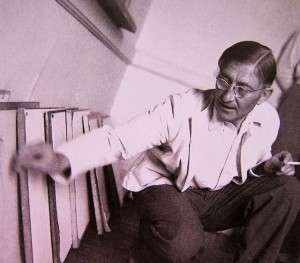 the last several years been independently researching the history of Black Mountain College.
the last several years been independently researching the history of Black Mountain College.
Black Mountain College was located near Ahsville, North Carolina. It was the brain child of the controversial former Rollins College professor John A. Rice in an effort to illustrate and act on John Dewey’s progressive principles. As such, Black Mountain College provided an extraordinary (albeit relatively brief) chapter in the history of education and the arts and served as the critical 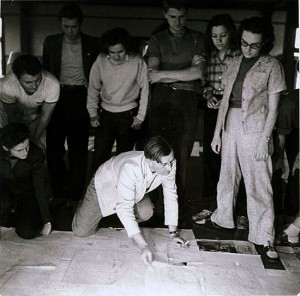 meeting ground for renowned (former Bauhaus) instructor Josef Albers, his then student Robert Rauschenberg, and numerous other equally-notable artists, musicians and performers.
meeting ground for renowned (former Bauhaus) instructor Josef Albers, his then student Robert Rauschenberg, and numerous other equally-notable artists, musicians and performers.
Hired as Black Mountain College’s first art teacher, Josef Albers escaped the tumult and tragedy of Adolf Hitler’s Nazi Germany in 1933. He came to America without speaking a word of English. Robert Rauschenberg went to Black Mountain College in 1948, specifically to study with Albers, and stayed as student, teacher and artist-in-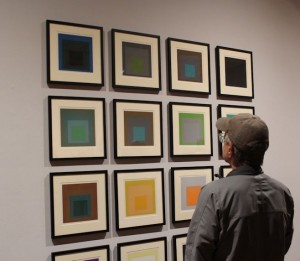 residence for the next several years. As a student at Black Mountain College in the late 1940s and early ‘50s, Rauschenberg later commented that, “Albers was a beautiful teacher and an impossible person… He wasn’t easy to talk to, and I found his criticism so excruciating and so devastating that I never asked for it. Years later, though, I’m still learning what he taught me, because what he taught had to do with the entire visual world… I consider Albers the most important teacher I’ve ever had, and I’m
residence for the next several years. As a student at Black Mountain College in the late 1940s and early ‘50s, Rauschenberg later commented that, “Albers was a beautiful teacher and an impossible person… He wasn’t easy to talk to, and I found his criticism so excruciating and so devastating that I never asked for it. Years later, though, I’m still learning what he taught me, because what he taught had to do with the entire visual world… I consider Albers the most important teacher I’ve ever had, and I’m 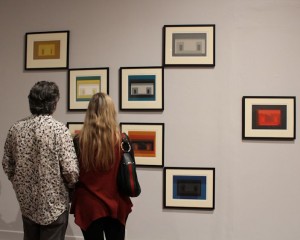 sure he considered me one of his poorest students.”
sure he considered me one of his poorest students.”
This event is open to the public, free of charge. For additional information, please contact the Bob Rauschenberg Gallery by telephone at (239) 489-9313 or visit the gallery’s website or Facebook timeline.
(This lecture is sponsored in part by the Department of State, Division of Cultural Affairs, the Florida Council of Arts and Culture and the State of Florida, with additional support from Chico’s International.)
_________________________________________________________________
Exhibit focusing on student-teacher relationship between Bob Rauschenberg and Josef Albers on view at FSW (03-03-16)
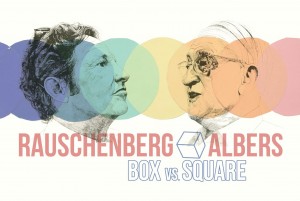 On view now at the Bob Rauschenberg Gallery on the Lee campus of Florida SouthWestern State College is Rauschenberg & Albers: Box vs. Square, the first in-depth investigation anywhere of the student-teacher relationship between these two great modern masters.
On view now at the Bob Rauschenberg Gallery on the Lee campus of Florida SouthWestern State College is Rauschenberg & Albers: Box vs. Square, the first in-depth investigation anywhere of the student-teacher relationship between these two great modern masters.
Robert Rauschenberg famously spoke of Josef 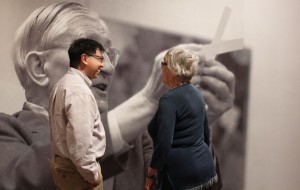 Albers as his most important teacher, and (laughingly) acknowledged that Albers surely considered Rauschenberg his poorest student. Of course, much celebrated for his own artistic production, Josef Albers’ pioneering research into the interaction of color (while teaching at the Bauhaus, Black Mountain College and later at Yale
Albers as his most important teacher, and (laughingly) acknowledged that Albers surely considered Rauschenberg his poorest student. Of course, much celebrated for his own artistic production, Josef Albers’ pioneering research into the interaction of color (while teaching at the Bauhaus, Black Mountain College and later at Yale 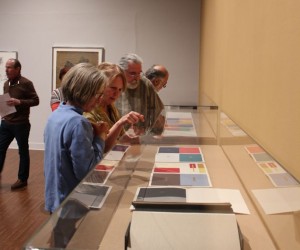 University) and legacy as an educator are at least as significant as the paintings and prints he created. His teachings and related publications are still at the core of college art curricula and the subject of courses in every serious teaching institution, including Florida SouthWestern State College, where this exhibition has transformed the Bob Rauschenberg Gallery into both an exhibition space and a classroom with hands-on workshops
University) and legacy as an educator are at least as significant as the paintings and prints he created. His teachings and related publications are still at the core of college art curricula and the subject of courses in every serious teaching institution, including Florida SouthWestern State College, where this exhibition has transformed the Bob Rauschenberg Gallery into both an exhibition space and a classroom with hands-on workshops  and lectures in conjunction with regularly-scheduled “Color Theory” course offerings during the Spring Semester.
and lectures in conjunction with regularly-scheduled “Color Theory” course offerings during the Spring Semester.
Widely-acknowledged as one of the most important artists of the 20th Century, Bob Rauschenberg is credited with pioneering the transition from European modernism to American pop art. His influence still looms large around the globe and his work has been exhibited and 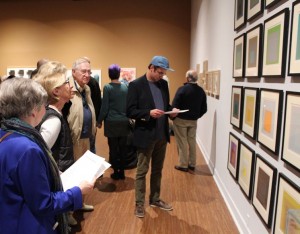 collected by every major art museum in the world. As an artist who described himself as working in the “Gap between Art and Life” and who often found inspiration and component parts for his paintings and Combines by walking around his Lower East Side/New York City neighborhood block, Rauschenberg turned to cardboard boxes as a subject matter and raw/source material after unloading his belongings upon arriving
collected by every major art museum in the world. As an artist who described himself as working in the “Gap between Art and Life” and who often found inspiration and component parts for his paintings and Combines by walking around his Lower East Side/New York City neighborhood block, Rauschenberg turned to cardboard boxes as a subject matter and raw/source material after unloading his belongings upon arriving 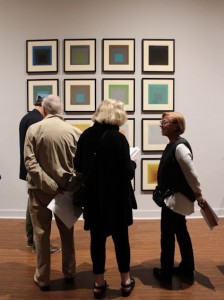 permanently in Florida in 1970.
permanently in Florida in 1970.
“Trading the detritus of city life for the sunshine and sand of Captiva Island, the first series of works the artist made locally were the result and direct product of the abundant boxes used to transport his life and art from New York to his new beach-side home,” observes Bob Rauschenberg Gallery Director Jade Dellinger: “So, it is particularly fitting that these works be exhibited more than four decades later in the Southwest Florida context that inspired their creation.”
Rauschenberg & Albers: Box vs. Square is on view now through 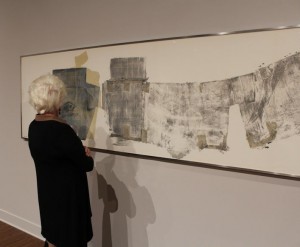 May 14. Gallery hours are from 10 a.m to 4 p.m. Monday through Friday and from 11 a.m. through 3 p.m. on Saturdays. The gallery is closed Sundays and holidays, as well as during FSW’s spring break from March 7 – 13. For more information, please telephone (239) 489-9313 or visit www.RauschenbergGallery.com.
May 14. Gallery hours are from 10 a.m to 4 p.m. Monday through Friday and from 11 a.m. through 3 p.m. on Saturdays. The gallery is closed Sundays and holidays, as well as during FSW’s spring break from March 7 – 13. For more information, please telephone (239) 489-9313 or visit www.RauschenbergGallery.com.
Please click here for more on this exhibition.
__________________________________________________________________________________________
‘Rauschenberg & Albers’ opens with ethereal music by electro-acoustic violinist Martha Mooke (02-27-16)
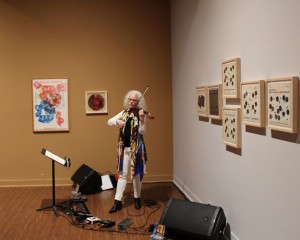 Rauschenberg & Albers: Box vs. Square opened Friday night at the Bob Rauschenberg Gallery on the Lee campus of Florida SouthWestern State College. The evening was highlighted by performances of Sonic Combine outside and Martha Mooke in the gallery.
Rauschenberg & Albers: Box vs. Square opened Friday night at the Bob Rauschenberg Gallery on the Lee campus of Florida SouthWestern State College. The evening was highlighted by performances of Sonic Combine outside and Martha Mooke in the gallery.
Mooke is a pioneer in the field of the electric five string viola/violin. She transcends musical boundaries by synthesizing her classical music 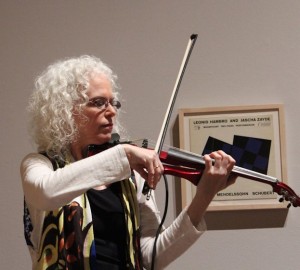 training with extended techniques, digital effects processing and improvisation. She has developed a unique musical voice while retaining the depth and soul of the instrument. Martha has received awards from Meet the Composer and Arts International, among others. In particular, she received an ASCAP 2001 Concert Music Award for creating and producing ASCAP’s new music showcase THRU THE WALLS featuring composer/performers whose work defies
training with extended techniques, digital effects processing and improvisation. She has developed a unique musical voice while retaining the depth and soul of the instrument. Martha has received awards from Meet the Composer and Arts International, among others. In particular, she received an ASCAP 2001 Concert Music Award for creating and producing ASCAP’s new music showcase THRU THE WALLS featuring composer/performers whose work defies 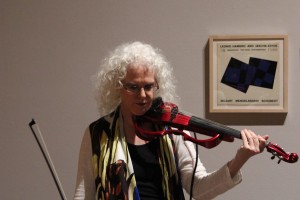 categorization. Besides her catalog of works for solo and ensemble electric strings, she has composed music for theater and ballet and served as Music Director for national and international events. Her genre-defying recordings, her solo debut CD, Enharmonic Vision, and Café Mars with guitarist Randolph Hudson, III, as the duo “Bowing,” have attracted wide critical acclaim.
categorization. Besides her catalog of works for solo and ensemble electric strings, she has composed music for theater and ballet and served as Music Director for national and international events. Her genre-defying recordings, her solo debut CD, Enharmonic Vision, and Café Mars with guitarist Randolph Hudson, III, as the duo “Bowing,” have attracted wide critical acclaim.
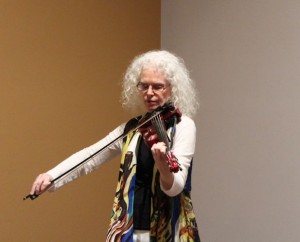 Her professional affiliations and appearances reads like a who’s who list of musical performers. She has toured internationally as a member of Barbra Streisand’s acclaimed orchestra during the North American 2006 and European 2007 tours, with Peter Gabriel on his “New Blood Tour 2010” and traveled throughout the U.S., Canada and Mexico with “Star Wars In Concert.” She has also performed with Bon Jovi on “MTV Unplugged,”
Her professional affiliations and appearances reads like a who’s who list of musical performers. She has toured internationally as a member of Barbra Streisand’s acclaimed orchestra during the North American 2006 and European 2007 tours, with Peter Gabriel on his “New Blood Tour 2010” and traveled throughout the U.S., Canada and Mexico with “Star Wars In Concert.” She has also performed with Bon Jovi on “MTV Unplugged,” 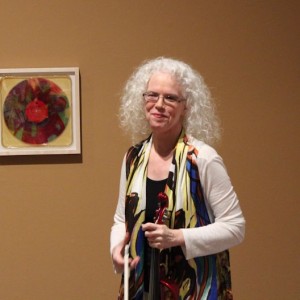 played with Enya, Andrea Bocelli, Luciano Pavarotti, Tony Bennett, Johnny Mathis, Chocolate Genius, Al DiMeola, John Cale, Anthony Braxton, and the Orchestra of St. Luke’s, as well as in the U.S. premiere of Paul McCartney’s “Standing Stone” at Carnegie Hall and on numerous film scores by Philip Glass.
played with Enya, Andrea Bocelli, Luciano Pavarotti, Tony Bennett, Johnny Mathis, Chocolate Genius, Al DiMeola, John Cale, Anthony Braxton, and the Orchestra of St. Luke’s, as well as in the U.S. premiere of Paul McCartney’s “Standing Stone” at Carnegie Hall and on numerous film scores by Philip Glass.
Mooke has appeared on Regis Live!, the David Letterman, The View, Late Night with Conan O’Brien and Rosie O’Donnell shows, and since 2001, Ms. Mooke and her avant-garde string 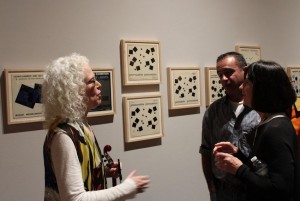 quartet, the Scorchio Quartet have performed at the Tibet House Benefit Concerts at Carnegie Hall with David Bowie, Philip Glass, Patti Smith, Michael Stipe, David Byrne, Iggy Pop, Regina Spektor, Moby, Lou Reed, Trey Anastasio, Ziggy Marley, Rufus Wainwright, and the Kronos Quartet. Scorchio appears on David Bowie’s 2002 release Heathen.
quartet, the Scorchio Quartet have performed at the Tibet House Benefit Concerts at Carnegie Hall with David Bowie, Philip Glass, Patti Smith, Michael Stipe, David Byrne, Iggy Pop, Regina Spektor, Moby, Lou Reed, Trey Anastasio, Ziggy Marley, Rufus Wainwright, and the Kronos Quartet. Scorchio appears on David Bowie’s 2002 release Heathen.
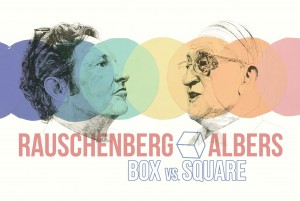 Rauschenberg & Albers: Box vs. Square is on view now through May 14. Gallery hours are from 10 a.m to 4 p.m. Monday through Friday and from 11 a.m. through 3 p.m. on Saturdays. The gallery is closed Sundays and holidays, as well as during FSW’s spring break from March 7 – 13. For more information, please telephone (239) 489-9313 or visit www.RauschenbergGallery.com.
Rauschenberg & Albers: Box vs. Square is on view now through May 14. Gallery hours are from 10 a.m to 4 p.m. Monday through Friday and from 11 a.m. through 3 p.m. on Saturdays. The gallery is closed Sundays and holidays, as well as during FSW’s spring break from March 7 – 13. For more information, please telephone (239) 489-9313 or visit www.RauschenbergGallery.com.
____________________________________________________________________________
More about legendary artist and art instructor Josef Albers in advance of ‘Rauschenberg & Albers’ exhibition (02-03-16)
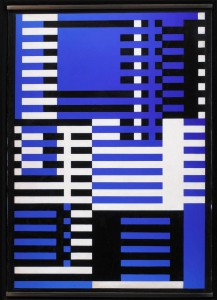 Florida SouthWestern State College has announced that its next exhibition at the Rauschenberg Gallery will be Rauschenberg & Albers: Box vs. Square, the first in-depth investigation anywhere of the student-teacher relationship between these two great modern masters.
Florida SouthWestern State College has announced that its next exhibition at the Rauschenberg Gallery will be Rauschenberg & Albers: Box vs. Square, the first in-depth investigation anywhere of the student-teacher relationship between these two great modern masters.
Josef Albers was a painter, poet, sculptor, teacher, and art theoretician. Color Field painting and Op Art were among the innovative movements he helped pioneer.
Albers’ work can be separated into three series. Transformations of a Scheme (1948–52) was a series of engravings on plastic. 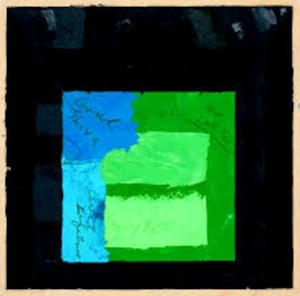 Structural Constellations (1953–58) consisted of drawings. In both of these early, monochromatic works, Albers created complex linear designs, each subject to multiple spatial interpretations. Evincing his basic approach to exploring the mutability of human perception and the range of optical and psychological effects that colors alone can produce depending on their position and proximity, these series systematically explored the effects of perception.
Structural Constellations (1953–58) consisted of drawings. In both of these early, monochromatic works, Albers created complex linear designs, each subject to multiple spatial interpretations. Evincing his basic approach to exploring the mutability of human perception and the range of optical and psychological effects that colors alone can produce depending on their position and proximity, these series systematically explored the effects of perception.
His signature series of paintings was Homage to 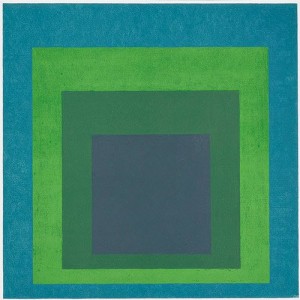 the Square, which he began in 1950 and continued to explore until his death in 1976. In each of the more than 1,000 related works included in this series, Albers employed a single, repeated geometric shape devoid of symbolism to systematically experiment with the “relativity” of color – how it changes through juxtaposition, placement, and interaction with other colors, generating the illusion of attraction, resistance, weight, and movement. He accomplished this by superimposing colored forms on top of each other,
the Square, which he began in 1950 and continued to explore until his death in 1976. In each of the more than 1,000 related works included in this series, Albers employed a single, repeated geometric shape devoid of symbolism to systematically experiment with the “relativity” of color – how it changes through juxtaposition, placement, and interaction with other colors, generating the illusion of attraction, resistance, weight, and movement. He accomplished this by superimposing colored forms on top of each other, 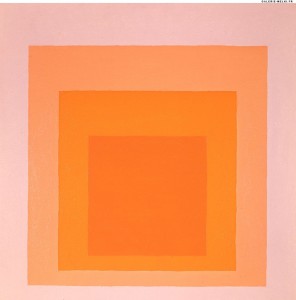 carefully arranging them so that the color of each square optically alters the sizes, hues, and spatial relationships of the others. Such sustained attention to a single aspect of painting reflects Albers conviction that insight is only attained through “continued trying and critical repetition.”
carefully arranging them so that the color of each square optically alters the sizes, hues, and spatial relationships of the others. Such sustained attention to a single aspect of painting reflects Albers conviction that insight is only attained through “continued trying and critical repetition.”
Homage to the Square was exhibited worldwide and formed the basis of the first solo exhibition given to a living artist at the Metropolitan Museum of Art in 1971.
Please click here for more information about Rauschenberg & Albers: Box vs. Square.
___________________________________________________________
Remembering Josef Albers in anticipation of ‘Rauschenberg & Albers: Box vs. Square’ (02-02-16)
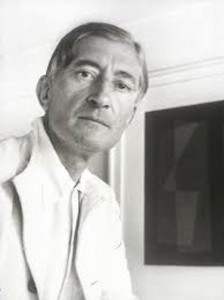 Florida SouthWestern State College has announced that its next exhibition at the Rauschenberg Gallery will be Rauschenberg & Albers: Box vs. Square, the first in-depth investigation anywhere of the student-teacher relationship between these two great modern masters.
Florida SouthWestern State College has announced that its next exhibition at the Rauschenberg Gallery will be Rauschenberg & Albers: Box vs. Square, the first in-depth investigation anywhere of the student-teacher relationship between these two great modern masters.
Josef Albers was a painter, poet, sculptor, teacher, and art theoretician. Color Field painting and Op Art were among the innovative movements he helped pioneer.
From 1908 to 1920 Albers studied painting and printmaking in Berlin, Essen, and Munich and taught elementary school in his 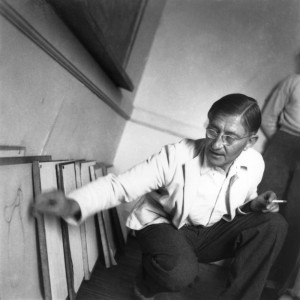 native town of Bottrop. In 1920 he enrolled at the newly formed Bauhaus, which was to become the most important design school in Germany. His most important creations of that period included compositions made of colored glass, as well as examples of furniture design, metalwork, and typography. After he became a “master” at the Bauhaus in 1925, Albers explored a style of painting characterized by the reiteration of abstract rectilinear patterns and the use of primary colors along with white and black.
native town of Bottrop. In 1920 he enrolled at the newly formed Bauhaus, which was to become the most important design school in Germany. His most important creations of that period included compositions made of colored glass, as well as examples of furniture design, metalwork, and typography. After he became a “master” at the Bauhaus in 1925, Albers explored a style of painting characterized by the reiteration of abstract rectilinear patterns and the use of primary colors along with white and black.
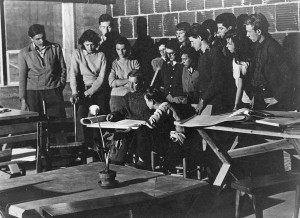 When the Nazi government closed the Bauhaus in 1933, Albers left Germany for the United States. On the recommendation of architect Philip Johnson, Albers organized the fine-arts curriculum at Black Mountain College in North Carolina, where he taught until 1949. “So powerful was Albers’s influence on the nature of the school that many people today assume that Black Mountain
When the Nazi government closed the Bauhaus in 1933, Albers left Germany for the United States. On the recommendation of architect Philip Johnson, Albers organized the fine-arts curriculum at Black Mountain College in North Carolina, where he taught until 1949. “So powerful was Albers’s influence on the nature of the school that many people today assume that Black Mountain 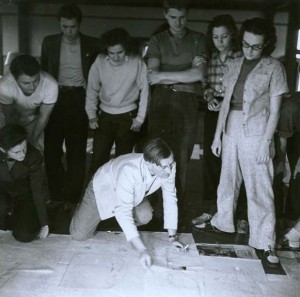 College was a school of art,” writes art historian Frederick A. Horowitz. “At Black Mountain College, Albers shifted his objectives from teaching professional skills to teaching the whole person. He was confident that he could improve anyone’s life by exposing that person to visual training, and welcomed John Dewey’s then-novel assertion that art should be integrated into the general curriculum. As a consequence of his work with young, non-professionals, he began increasingly to emphasize thinking for oneself as a primary goal of his teaching.”
College was a school of art,” writes art historian Frederick A. Horowitz. “At Black Mountain College, Albers shifted his objectives from teaching professional skills to teaching the whole person. He was confident that he could improve anyone’s life by exposing that person to visual training, and welcomed John Dewey’s then-novel assertion that art should be integrated into the general curriculum. As a consequence of his work with young, non-professionals, he began increasingly to emphasize thinking for oneself as a primary goal of his teaching.”
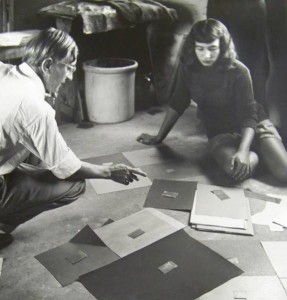 “Instead of art I have taught philosophy,” Albers once stated. “Though technique for me is a big word, I never have taught how to paint. All my doing was to make people to see.”
“Instead of art I have taught philosophy,” Albers once stated. “Though technique for me is a big word, I never have taught how to paint. All my doing was to make people to see.”
In 1950, Albers began a 10-year tenure as chairman of the art department of Yale University. Over the course of his time at both Black Mountain and Yale, he brought the tenets of European modernism to America, furnishing the theoretical basis for the development of non-objective art during and after the age of Abstract Expressionism. His extensive 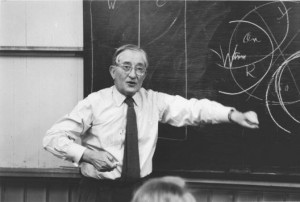 theoretical work proposing that color, rather than form, is the primary medium of pictorial language, profoundly influenced the development of modern art in the United States, and his 1963 book, Interaction of Color, provided the most comprehensive analysis of the function and perception of color to date and profoundly influenced art education and artistic practice,
theoretical work proposing that color, rather than form, is the primary medium of pictorial language, profoundly influenced the development of modern art in the United States, and his 1963 book, Interaction of Color, provided the most comprehensive analysis of the function and perception of color to date and profoundly influenced art education and artistic practice, 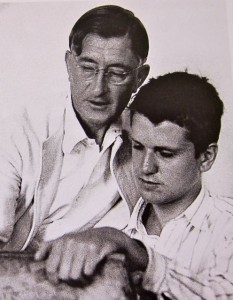 especially Color Field painting and Minimalism.
especially Color Field painting and Minimalism.
In addition to influencing the art faculty at both institutions, Albers counted Robert Rauschenberg, Eva Hesse and Kenneth Noland among his most influential students. (Other luminaries who attended Black Mountain include John Chamberlain, Kenneth Snelson, Arthur Penn, Peter Voulkos, Dorothea Rockburne, Paul Taylor, Francine du Plessix Gray, Robert Creeley and Jonathan Williams.)
The exhibition will open on Friday, February 26 with a public reception and performances by internationally-acclaimed electro-acoustic violist Martha Mooke and Sonic Combine. This event is open to the public, free of charge. For more information, please telephone (239) 489-9313 or visit www.RauschenbergGallery.com.
__________________________________________________________________________________
New exhibit at Bob Rauschenberg Gallery focuses on student-teacher relationship between namesake and Josef Albers (01-27-16)
 Florida SouthWestern State College has announced its next exhibition inside the Rauschenberg Gallery. Titled Rauschenberg & Albers: Box vs. Square, the exhibition will open on Friday, February 26 with a public reception and performances by internationally-acclaimed electro-acoustic violist Martha Mooke and Sonic Combine.
Florida SouthWestern State College has announced its next exhibition inside the Rauschenberg Gallery. Titled Rauschenberg & Albers: Box vs. Square, the exhibition will open on Friday, February 26 with a public reception and performances by internationally-acclaimed electro-acoustic violist Martha Mooke and Sonic Combine.
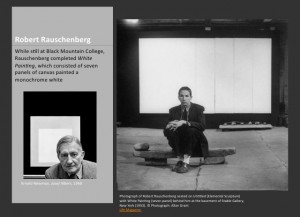 Rauschenberg & Albers: Box vs. Square will be the first in-depth investigation anywhere of the student-teacher relationship between these two great modern masters. Examined for the first time within the framework of the rigid “Homage to the Square” and “Interaction of Color” series of his most influential Black Mountain College instructor Josef Albers, Rauschenberg & Albers: Box vs.
Rauschenberg & Albers: Box vs. Square will be the first in-depth investigation anywhere of the student-teacher relationship between these two great modern masters. Examined for the first time within the framework of the rigid “Homage to the Square” and “Interaction of Color” series of his most influential Black Mountain College instructor Josef Albers, Rauschenberg & Albers: Box vs. 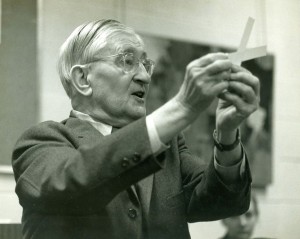 Square at the Bob Rauschenberg Gallery is a curated exhibition that reconsiders the playful cardboard box works (his “Cardboards” and “Cardbirds”) of the internationally-acclaimed artist and Lee County, Florida resident Bob Rauschenberg.
Square at the Bob Rauschenberg Gallery is a curated exhibition that reconsiders the playful cardboard box works (his “Cardboards” and “Cardbirds”) of the internationally-acclaimed artist and Lee County, Florida resident Bob Rauschenberg.
Robert Rauschenberg famously spoke of Josef Albers as his most important teacher, and (laughingly) acknowledged that Albers surely 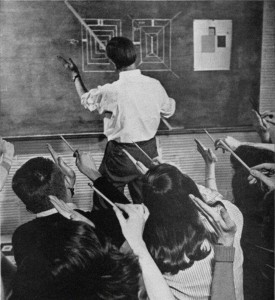 considered Rauschenberg his poorest student. Of course, much celebrated for his own artistic production, Josef Albers’ pioneering research into the interaction of color (while teaching at the Bauhaus, Black Mountain College and later at Yale University) and legacy as an educator are at least as significant as the paintings and prints he created. His teachings and related publications are still at the core of college art curricula and the subject of courses in every serious teaching institution, including Florida SouthWestern State College, where this exhibition will transform the Bob
considered Rauschenberg his poorest student. Of course, much celebrated for his own artistic production, Josef Albers’ pioneering research into the interaction of color (while teaching at the Bauhaus, Black Mountain College and later at Yale University) and legacy as an educator are at least as significant as the paintings and prints he created. His teachings and related publications are still at the core of college art curricula and the subject of courses in every serious teaching institution, including Florida SouthWestern State College, where this exhibition will transform the Bob 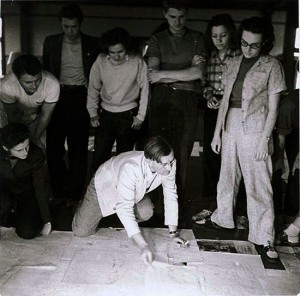 Rauschenberg Gallery into both an exhibition space and a classroom with hands-on workshops and lectures in conjunction with regularly-scheduled “Color Theory” course offerings during the Spring Semester.
Rauschenberg Gallery into both an exhibition space and a classroom with hands-on workshops and lectures in conjunction with regularly-scheduled “Color Theory” course offerings during the Spring Semester.
Widely-acknowledged as one of the most important artists of the 20th Century, Bob Rauschenberg is credited with pioneering the transition from European modernism to American pop art. His influence still looms large around the globe and his work has been exhibited and 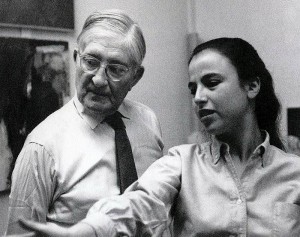 collected by every major art museum in the world. As an artist who described himself as working in the ‘Gap between Art and Life’ and who often found inspiration and component parts for his paintings and ‘Combines’ by walking around his Lower East Side/New York City neighborhood block, Rauschenberg turned to cardboard boxes as a subject matter and raw/source material after unloading his belongings upon arriving
collected by every major art museum in the world. As an artist who described himself as working in the ‘Gap between Art and Life’ and who often found inspiration and component parts for his paintings and ‘Combines’ by walking around his Lower East Side/New York City neighborhood block, Rauschenberg turned to cardboard boxes as a subject matter and raw/source material after unloading his belongings upon arriving 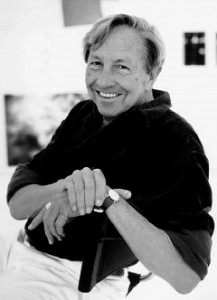 permanently to Florida in 1970.
permanently to Florida in 1970.
“Trading the detritus of city life for the sunshine and sand of Captiva Island, the first series of works the artist made locally were the result and direct product of the abundant boxes used to transport his life and art from New York to his new beach-side home,” observes Bob Rauschenberg Gallery Director Jade Dellinger: “So, it is particularly fitting that these works be exhibited more than four decades later in the Southwest Florida context that inspired their creation.”
The Bob Rauschenberg Gallery was founded as The Gallery of Fine 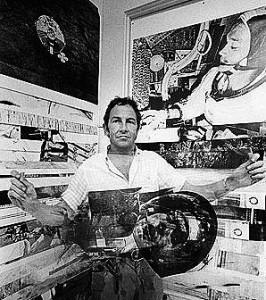 Art in 1979 on the Lee County campus of Florida SouthWestern State College/FSW (then Edison Community College). On June 4, 2004, the Gallery of Fine Art was renamed the Bob Rauschenberg Gallery to honor and commemorate its long association and friendship with the artist. Over more than three decades until his death, the Gallery worked closely with Rauschenberg to present world premiere exhibitions including multiple installations of the ¼ Mile or Two Furlong Piece. The artist insisted on naming the space the Bob Rauschenberg Gallery (versus the “Robert
Art in 1979 on the Lee County campus of Florida SouthWestern State College/FSW (then Edison Community College). On June 4, 2004, the Gallery of Fine Art was renamed the Bob Rauschenberg Gallery to honor and commemorate its long association and friendship with the artist. Over more than three decades until his death, the Gallery worked closely with Rauschenberg to present world premiere exhibitions including multiple installations of the ¼ Mile or Two Furlong Piece. The artist insisted on naming the space the Bob Rauschenberg Gallery (versus the “Robert 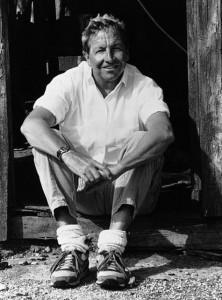 Rauschenberg Gallery”) as it was consistent with the intimate, informal relationship he maintained with both the local Southwest Florida community and FSW.
Rauschenberg Gallery”) as it was consistent with the intimate, informal relationship he maintained with both the local Southwest Florida community and FSW.
This event is open to the public, free of charge. This project is sponsored in part by the Department of State, Division of Cultural Affairs, the Florida Council of Arts and Culture and the State of Florida, with additional support from Chico’s International.
Gallery hours are from 10 a.m to 4 p.m. Monday through Friday and from 11 a.m. through 3 p.m. on Saturdays. The gallery is closed Sundays and holidays, as well as during FSW’s spring break from March 7 – 13.
For more information, please telephone (239) 489-9313 or visit www.RauschenbergGallery.com.














 Tom Hall is both an amateur artist and aspiring novelist who writes art quest thrillers. He is in the final stages of completing his debut novel titled "Art Detective," a story that fictionalizes the discovery of the fabled billion-dollar Impressionist collection of Parisian art dealer Josse Bernheim-Jeune, thought by many to have perished during World War II when the collection's hiding place, Castle de Rastignac in southern France, was destroyed by the Wehrmacht in reprisal for attacks made by members of the Resistance operating in the area. A former tax attorney, Tom holds a bachelor's degree as well as both a juris doctorate and masters of laws in taxation from the University of Florida. Tom lives in Estero, Florida with his fiancee, Connie, and their four cats.
Tom Hall is both an amateur artist and aspiring novelist who writes art quest thrillers. He is in the final stages of completing his debut novel titled "Art Detective," a story that fictionalizes the discovery of the fabled billion-dollar Impressionist collection of Parisian art dealer Josse Bernheim-Jeune, thought by many to have perished during World War II when the collection's hiding place, Castle de Rastignac in southern France, was destroyed by the Wehrmacht in reprisal for attacks made by members of the Resistance operating in the area. A former tax attorney, Tom holds a bachelor's degree as well as both a juris doctorate and masters of laws in taxation from the University of Florida. Tom lives in Estero, Florida with his fiancee, Connie, and their four cats.